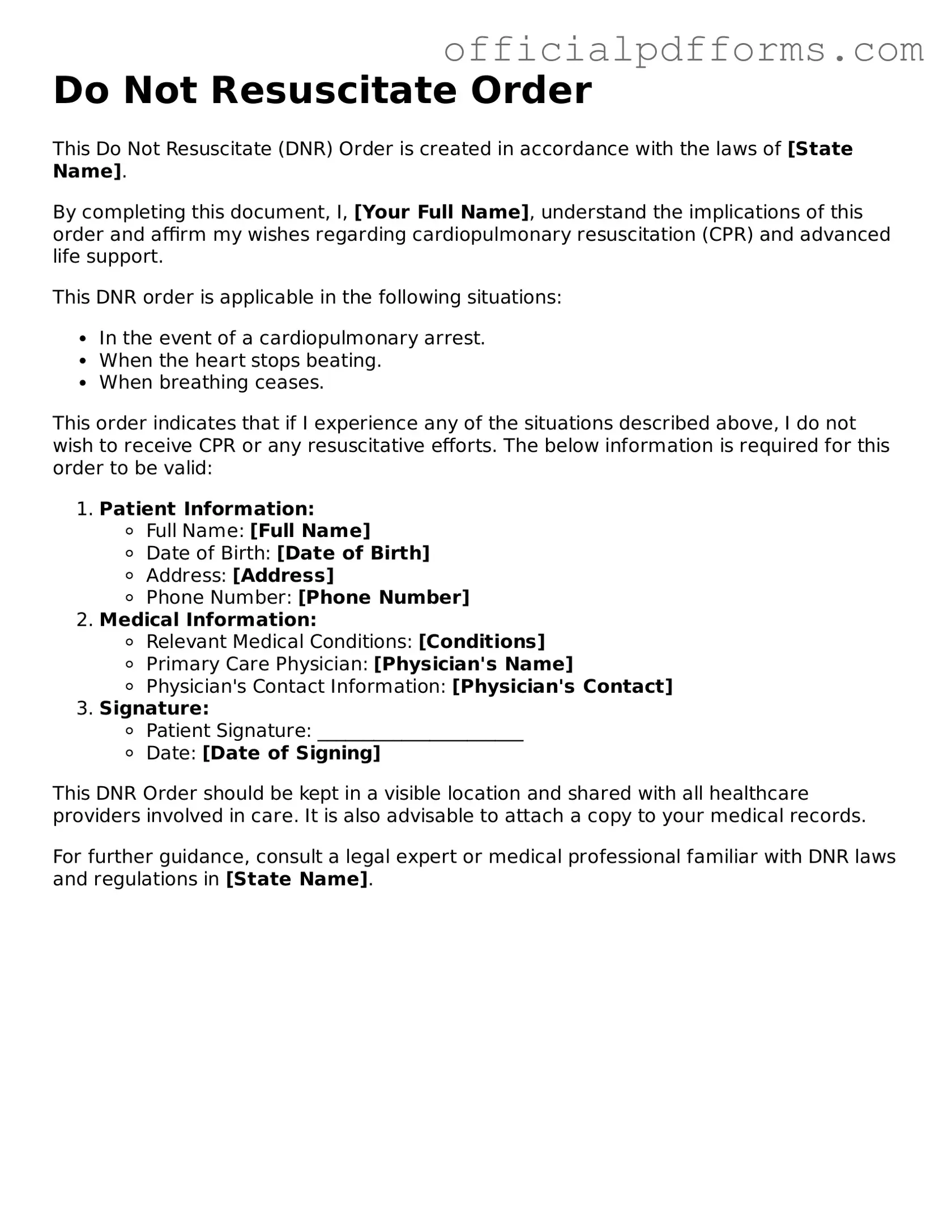What is a Do Not Resuscitate Order (DNR)?
A Do Not Resuscitate Order is a legal document that allows a person to refuse resuscitation efforts in case of cardiac arrest or respiratory failure. This order is typically used by individuals with serious health conditions who wish to avoid aggressive medical interventions that may not align with their goals of care.
Who can request a DNR?
Generally, any adult who is capable of making their own medical decisions can request a DNR. This includes patients with terminal illnesses or those who are in advanced stages of chronic diseases. Family members or legal guardians may also request a DNR on behalf of someone who is unable to make decisions for themselves.
How is a DNR order created?
To create a DNR order, a conversation with a healthcare provider is necessary. The provider will assess the individual's health condition and discuss the implications of a DNR. Once both parties agree, the provider will complete the DNR form, which must be signed by the patient and the physician. In some states, a witness may also be required.
Is a DNR order legally binding?
Yes, a properly executed DNR order is legally binding. Healthcare providers are required to follow the order in emergency situations. However, it’s essential to ensure that the DNR is recognized in the state where the patient is receiving care, as laws and regulations may vary by state.
Can a DNR order be revoked?
Yes, a DNR order can be revoked at any time. The individual who signed the order can verbally communicate their wish to revoke it, or they can create a new document that explicitly states the revocation. It is advisable to inform healthcare providers and family members of the change to ensure that the new wishes are respected.
What happens if a DNR order is not honored?
If a DNR order is not honored, it can lead to legal complications for the healthcare providers involved. Patients or their families may have grounds for a complaint or lawsuit if they believe their wishes were ignored. It is crucial for individuals to ensure that their DNR orders are clearly communicated and readily available to medical personnel.
Where should I keep my DNR order?
It is important to keep the DNR order in a place that is easily accessible. Common recommendations include:
-
Keeping a copy in the patient’s medical file.
-
Providing copies to family members and caregivers.
-
Displaying a copy prominently in the home, such as on the refrigerator or near the front door.
Having multiple copies ensures that healthcare providers can quickly access the order when needed.
